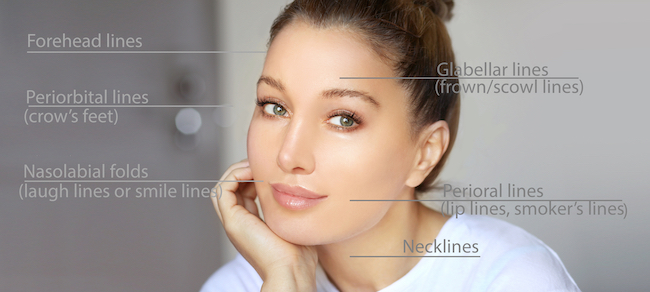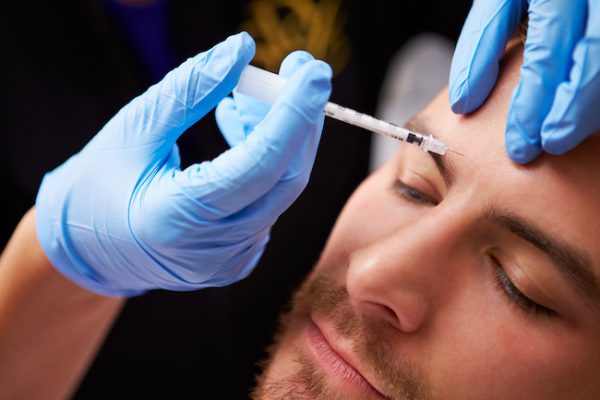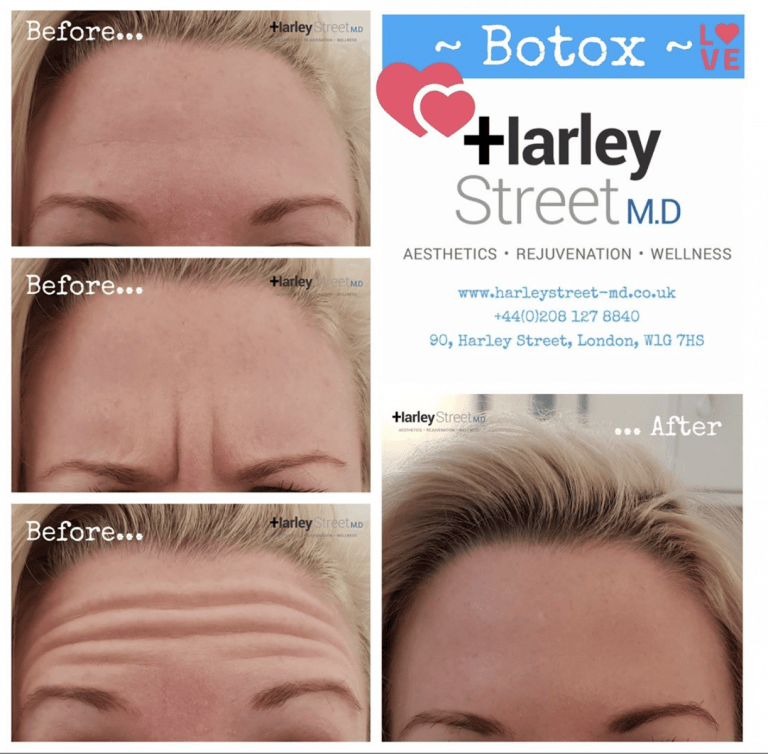
Botox is rising in popularity, and the demand for injections is high. It’s no surprise when you see the incredible results Botox treatments can offer, especially for anti-ageing and smoothing out fine lines and wrinkles. If Botox is something you’re considering and you want to know more about this treatment — including how much it costs — read on to find out everything you need to know.
In the simplest of terms, Botox is an injection that consists of a minimal concentration of toxin derived from the bacteria Clostridium botulinum. In large doses, botulinum toxin can be lethal. Typically, it is associated with poisoning from contaminated food products such as sausages or canned food. Through vast scientific research and refinement, the properties of this toxin were found to be effective in treating specific human ailments. The earliest uses of botulinum in humans were for the treatment of strabismus, or lazy eye.
Scientists estimate that this is one of the most poisonous substances in the world, though it has the potential to be used in many treatments. Botox works by blocking neural signals from the muscles to the nerve. By inhibiting these signals, the muscles in the area where the toxin is injected become relaxed. This relaxing effect is particularly useful in smoothing the appearance of fine lines and wrinkles.
According to the NHS, botulinum toxin or Botox injections “relax the muscles in your face to smooth out lines and facial wrinkles, such as crow’s feet and frown lines”. Usually administered by a fine needle, Botox injections can also help to treat medical conditions such as excessive sweating, chronic migraines and eye spasms.
Even though Botox is a toxin, it’s considered a generally safe cosmetic treatment with relatively few risks. Over the past decade, it has become commonplace, with many celebrities using it to enhance their natural beauty. It is considered one of the most popular non-surgical procedures in use today, with around six million Botox treatments administered every year.
You may be considering a facial treatment like Botox to improve your self-esteem and confidence. It’s perfectly normal to want to improve what you see in the mirror, and with new technologies and non-surgical options, you can have the face you’ve dreamed of with little effort or downtime. Botox is one of the best choices to reduce fine lines and wrinkles.
Botox injections are especially effective on dynamic wrinkles, those that occur from repetitive movements such as smiling, squinting or raising your eyebrows, but they can also significantly reduce the appearance of static wrinkles, those that show even when your face is still.
Botox treatments are effective at reducing:
• Forehead wrinkles
• Fine lines and wrinkles around the eyes
• Crow’s feet
• Eyebrow arches
• Nose lines
• Gummy smile
• Dimpled chin
• Drooping eyelids or lips
• Lines and wrinkles around the mouth and lips, also known as “smokers lines”.
• Lines on the neck
• Masseter muscles (for face slimming).
The powerful nature of Botox means it is also effectively used for combatting symptoms of several health conditions. Below is a list of health conditions Botox treatment might be an option for. It is always best to book a consultation with a professional before getting a botulinum toxin injection.
• Chronic migraines
• Excessive sweating
• Muscle contractures associated with cerebral palsy
• Overactive bladder
• Lazy eye or eye twitching
• Teeth grinding.

We offer many types of non-surgical procedures and facial treatments at our clinic in London. There are many benefits to choosing a non-surgical treatment over cosmetic surgery procedures. If you are researching your options on how to change your nose, get rid of wrinkles or plump up your lips, you’ve come to the right place. If you are feeling self-conscious and don’t feel like you can put your best face forward, there are many benefits to choosing Botox to reduce wrinkles.
• Little downtime: One of the greatest benefits of non-surgical treatments, in our opinion, is that there is little downtime or recovery. You may experience some slight bruising at the incision sites, but everyone is different. We suggest not scheduling any important dates for a couple of days after your procedure to be safe. Also, you don’t have to spend as much time to prep before the procedure as you would with surgical options.
• More natural look: Every surgery has risks involved, so you want to use a qualified and certified surgeon with an impeccable reputation. Our goal with Botox is to make the procedure look as natural as possible so that no one will even notice you had it done. We don’t want anyone to have that frozen face look many celebrities have after bad procedures and long-time use. It might be best for you to have several different treatments for the best look and results. We will discuss this with you in a consultation so that you get exactly what you want.
• Fewer risks: Cosmetic surgery will always come with risks, but non-surgical treatments have far fewer risks than going under the knife. Botox is the safest and most popular treatment for reducing facial wrinkles.
Botox treatments are considered safe, so you might be surprised to hear that botulinum toxin is actually a purified protein from the same toxin that causes botulism, a type of food poisoning that can weaken the nervous system.
It makes sense then that Botox injections weaken or paralyse the muscles or block certain nerve endings to cause muscle weakness in the places where there’s an issue.
This might sound scary, but the doses used in a Botox treatment are tiny, so they’re unlikely to affect you negatively, and Botox is considered a safe treatment. Like most clinical treatments, you should only have Botox injections administered by a licensed clinician. While it is generally safe, it is vital to ensure that you are also receiving the correct dosage.
There are minimal side effects associated with Botox injections. Some may not even feel any at all. Rare side effects such as bruising or redness may occur but are only temporary. Very few patients may feel headaches, which disappear after about 24-48 hours. However, this is an infrequent occurrence. It is also recommended to avoid rubbing the area where Botox is administered to avoid unwanted dispersion.
As a precaution, Botox is not licensed and not recommended for pregnant and breastfeeding women. It is also not suitable for a patient with certain known neurological conditions. Before getting any cosmetic treatment, always consult a doctor for advice.
By using an experienced doctor or practitioner, there are few risks involved with Botox itself. This paper by the National Library of Medicine explains that there are no long-term or life-threatening effects based on administrating the correct dose for a cosmetic treatment. There may be some long-term side effects if you continue this procedure over a long time, so be sure to discuss the risks with your doctor. A reputable practitioner will be happy to discuss Botox results and aftermath with you.

An experienced practitioner will use a topical anaesthetic at the injection site, so many people report that a Botox injection is relatively pain-free. The needle used to administer Botox injections is usually very fine to minimise any pain or potential bruising.
Once the anaesthetic has worn off, it’s not uncommon to feel a little pain at the injection site, but this should disappear after a short time.
If you are curious about what Botox feels like and when it starts to work, we can ease your worries today. Botox is FDA-approved, safe and used in millions of treatments each year. Botox treatment is administered using fine needles. We’ll make you feel as comfortable as possible in our clinic. You may feel a slight bit of pinching or stinging from the insertion of the needle. An ice pack might be used after the procedure to minimise the bruising and swelling that some people experience.
Botox is the brand name for botulinum toxin type A, a toxin produced by the bacterium Clostridium botulinum. Although a toxin may sound dangerous, Botox is completely safe and approved for cosmetic use by both the EU and FDA — when administered by highly qualified practitioners, of course. When you receive Botox injections, you’re administered a small targeted dose of botulinum toxin, which “freezes” specific muscles in your face to help smooth out frown lines, forehead lines and crow’s feet.
The price you’re quoted when booking Botox will vary — here are some things to consider:
A good Botox clinic or practitioner will run through all this with you before any injections are administered, so you should always have a clear idea of the price and scope of treatment you’ll be receiving.
After having Botox injections, it’ll typically take three to five days before you start seeing results. After a fortnight, you should be able to see the full effect of your treatment. Don’t expect to see perfect Botox results immediately and certainly make sure to book well in advance of a special occasion — if you book in at the last minute the day before a big event, no one will be able to see your youthful, glowing skin.
Results from Botox will typically last three to four months, but some people may find they last a couple of months longer. The majority of patients visit their clinic for top-up treatments every four to six months, ensuring that they maintain a smooth, plump visage.

There are some potential common side effects following Botox, ranging from minor to serious symptoms. Here we’ll explore some of the most common. If you are worried, you should always speak to your practitioner or consult a healthcare professional.
• Redness: This is common after an injection of any kind, and you can expect this to go down after 30 minutes or so. If it persists, it might be infected, and you should seek help.
• Bruising: This may occur in more sensitive areas, but a good practitioner can reduce the chance of this happening. Bruises should fade naturally after a week or two.
• Pain at the injection site: It’s common for this to occur after any anaesthetic has worn off. Apply a cold compress to the area to ease the pain.
• Muscle weakness or stiffness: Provided this is a relatively mild feeling, this is also quite common, but if you’re worried, speak to your practitioner.
• Headache, cold or flu-like symptoms: Along with a headache, these can be common after Botox and should fade after 24 hours. Drink plenty of water, rest and consult your doctor if the symptoms persist.

• Infection: Always keep the injection site clean after your procedure to avoid infection. However, if the Botox area looks red and swollen, visit the doctor’s office to get some antibiotics.
• Blurred vision: Also known as double vision, this can sometimes occur after injections around the eyes. This is uncommon and should wear off, but you should consult your doctor if it persists.
• Allergic reaction: If you experience itchiness, a rash, trouble swallowing or breathing, or severe dizziness, seek help immediately as you may be experiencing an allergic reaction. This is uncommon but something to be aware of.
• Crooked or droopy eyelids or mouth: Web MD explains, “Around 5% of people who get Botox will have problems with eyelid droop. This number falls to less than 1% if a skilled doctor does the injection”. While this isn’t a serious health problem, it can affect your mental health. Avoid this by finding a practitioner with great reviews and plenty of experience.
The best way to achieve a natural-looking result with Botox that enhances your features is to look for a reputable practitioner with plenty of experience. Make sure you begin with a consultation to outline exactly what you want to achieve. Your practitioner should be honest with you about what’s possible, and you should leave the consultation with a good idea of what to expect.

The side effects of Botox are minimal. You can get back to most everyday activities immediately after treatment, but it is advisable to take the following steps:
Dos
• Massage the injected areas as frequently as possible for two hours to increase the uptake of Botox to targeted muscles.
• The day after treatment, use a lotion with a high sun protection factor (SPF) to protect your skin.
• Relax for the rest of the day to maintain a normal heart rate, as increased blood pressure can increase the risk of bruising.
Don’ts
• Avoid exercise for 24 hours; you should avoid overheating as this can increase the chance of bruising.
• Avoid makeup for at least four hours after treatment.
• Avoid blood thinners — ask your doctor whether you should stop taking these a few days before the procedure to minimise bruising.
• Don’t drink alcohol — wait at least 48 hours after your injection before consuming alcohol to reduce the risk of bruising.
• Don’t rub your face for one to three days to avoid spreading the toxin.
• Avoid skincare products with peeling chemicals such as glycolic acid for two days after treatment.
• Avoid lying down and sleeping for at least four hours after treatment.
• Stay out of the sun for at least four hours and avoid extreme direct sunlight for a day or two to reduce the risk of bruising.
• Avoid tan beds, hot tubs, saunas, very hot showers or baths for two weeks. Heat exposure can encourage bruising.
It’s important to feel safe and comfortable with the practitioner administering your Botox treatment, so look out for the following when choosing a Botox practitioner or clinic in London.
• They should be a medical professional, such as a doctor, nurse or dentist.
• They offer you a consultation beforehand to discuss what you hope to achieve.
• They are honest about what you can achieve with Botox alone and may offer alternative or additional treatment.
• They have great testimonials from other happy clients.
• They offer a two-week check-in to ensure you’re satisfied with your results.
The research and study references we used, in addition to our internal research, are all referenced here; most of them have an external link to the scientific publication. We work hard to bring you the most recent, impartial, factual and evidence-based information to help you make informed decisions.
• Advice about cosmetic procedures. From NHS
• 7 Natural-Looking Celebrities Who Use Botox. From Beauty Fix
• Witmanowski H, Błochowiak K. The whole truth about botulinum toxin – a review. Postepy Dermatol Alergol. 2020 Dec;37(6):853-861. doi: 10.5114/ada.2019.82795. Epub 2019 Feb 5. PMID: 33603602; PMCID: PMC7874868. From NIH
• Is Botox Poisonous? From Healthline
• What is botulinum toxin type A? From American Society of Plastic Surgeons
• Botox Vial — Uses, Side Effects, and More. From Web MD







